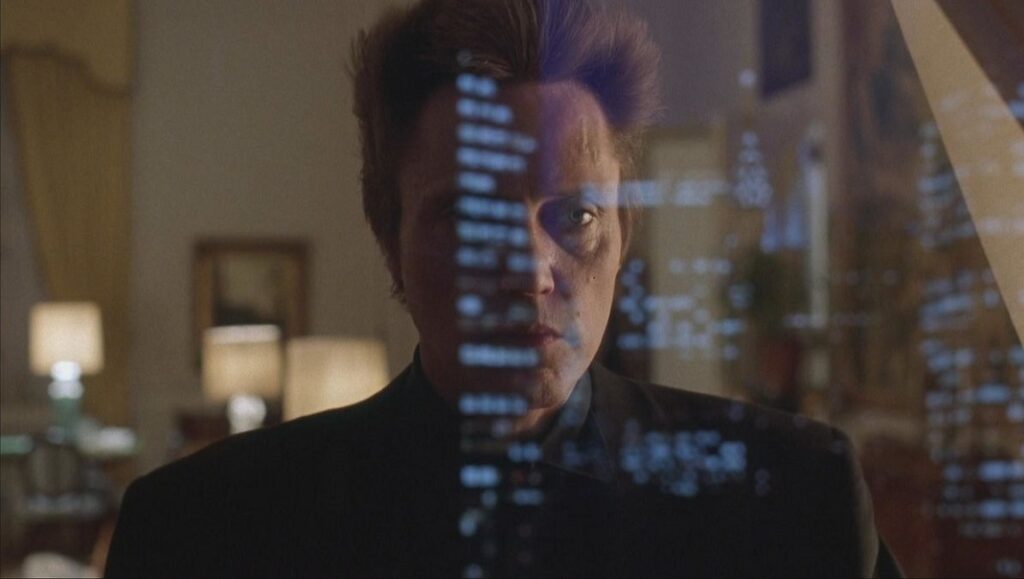Few directors have had a run of films as impressive as Abel Ferrara managed in the 1990s. In total, he released eight features during the decade, ranging from neo-noirs to experimental sci-fi to biographical dramas. His most enduring work of the period, and potentially of his entire career, is the one he made at the decade’s start: King of New York, a gritty and moody crime drama focusing on a drug kingpin who, after his release from prison, seizes power from the reigning New York gangs and reestablishes his empire. The twist is that our titular King, Frank White (Christopher Walken), believes he can make amends for his blood-soaked past by using his drug money to fund development projects, such as the restoration of a hospital in one of the poorer areas of Manhattan. His sights are on the people and places left to rot by the city’s politicians.
One of King of New York’s standout qualities is its absolutely electric cast: Laurence Fishburne, as White’s chaotic and out-of-control right-hand man, Jimmy Jump; David Caruso and Wesley Snipes, playing two cops hellbent on taking down White, even if it means going against the law they supposedly uphold; and Victor Argo, a regular of both Martin Scorsese and Ferrara’s films, in a larger role than he usually gets, playing an older and more visibly exhausted police chief. The energy and vitality of each of these characters compliments Walken’s much more muted performance, which is full of mumbling and defined mostly by the image of his incredibly gaunt frame, punctuated by bursts of intense violence in only select moments. One scene that illustrates the ensemble’s chemistry comes early, when White meets up with his gang for the first time after his release. There’s a slow building tension, and it feels as if somebody is about to get shot; but that foreboding quickly fizzles when White’s character suddenly bursts into a dance, and all share a commemorative hug.
Given how expressionistic King of New York is, it’s entirely fitting that, during a scene wherein someone attempts to facilitate a deal between White and a high profile Chinatown gang, Murnau’s Nosferatu plays in the background; the menacing vampire lumbering around jagged shadows seems to reflect Ferrara’s film back at itself. Similarly, the decision to plunge the neon-lit cityscape into a kind of perpetual darkness creates a visual style akin to Jacques Tourneur’s. New York feels as if it’s been totally engulfed by the night — an effect as haunting as a trip to Dracula’s castle or Frankenstein’s lair. White stalks these gloomy streets, visiting his rivals and slowly picking them off, one by one, until he’s regained ultimate control. However, despite the heavy shadows cast throughout the film, King of New York isn’t devoid of color; notably, Ferrara used swaths of deep blue to reflect the melancholia inching its way into these lives due the tragedies that befall the film’s characters. Then of course there’s the red blood splatter — some truly beautiful squib work — that ramps up the sense of action and brutality all the more when it butts up against the more muted overarching palette. And Ferrara’s command of aesthetic design here extends further: not only does King of New York look stunning, but it also has a beautifully orchestrated soundtrack (courtesy of longtime Ferrara collaborator Joe Delia), with the excellent Schoolly D song “Am I Black Enough for You?” playing just before the film’s greatest, and most violent, shootout.
All of this bravura style reinforces that King of New York is a film haunted by ruthlessness and affliction; despite the characters’ rough exteriors, it’s clear that they have all been twisted by a system — both social and economic — that has led them down their respective paths. White believes he can do what believes by generating large sums of money to help the city’s poorest, whereas Caruso’s detective Gilley believes the only way to save the city is to eliminate White’s gang entirely. Both go about their goals by bending the law around themselves without much regard for anything else, including themselves. White’s desire to reform his actions establishes an interesting dichotomy between this film and Abel’s immediate follow-up, Bad Lieutenant, which instead of focusing on salvation through pure economics, guides its tortured central character, who happens to be a corrupt police officer, down a path of spiritual enlightenment. Both characters slide easily into Abel’s oeuvre of damaged men, stuck in perpetual cycles of violence, attempting to absolve themselves of former sins.
King of New York is perhaps one of Ferrara’s most straightforward narrative films (accounting for its status as at least a cult classic), but it’s still thoroughly identifiable as a work of the auteur, losing very little of the audacious thematic tilts, low-budget aesthetics, and grungy energy that marks the director’s unique cinematic language. Whilst the examination of class warfare and rampant corruption might be executed in a fairly rudimentary way relative to the puzzling density of the director’s later films, its themes of persisting guilt, the possibility of transcendence, and murky living under late stage capitalism remain poignant. There’s plenty of divergence even among Ferrara enthusiasts as to which film exactly his masterpiece may be, but there’s no doubt that King of New York affords viewers an excellent entry point into the raw, gritty, and often bizarre filmography of one of American cinema’s most underrated and singular visionaries.
Part of Kicking the Canon — The Film Canon.
Enjoy our content? Want early access to features, interviews, and more? Support us on Patreon!


Comments are closed.